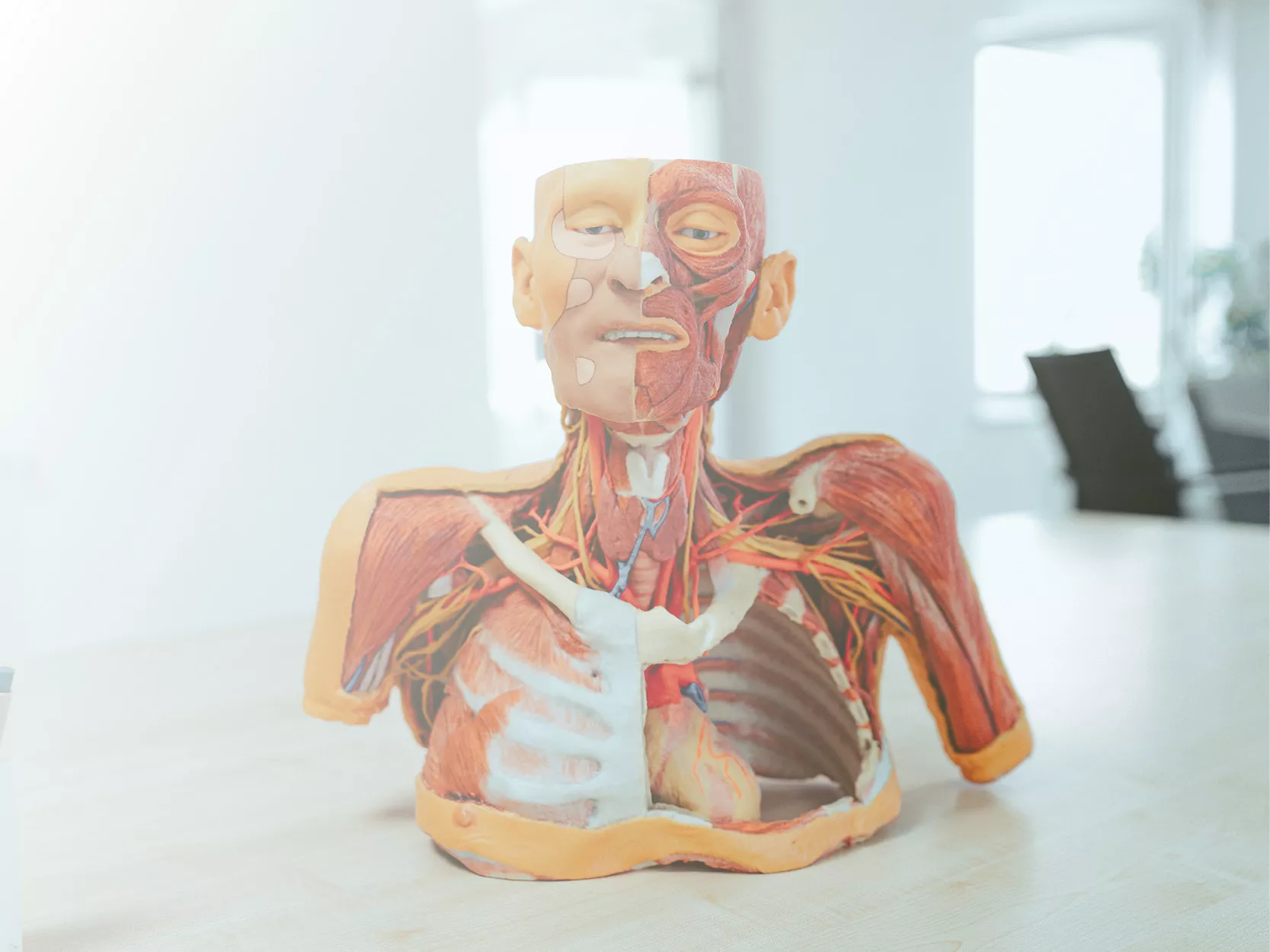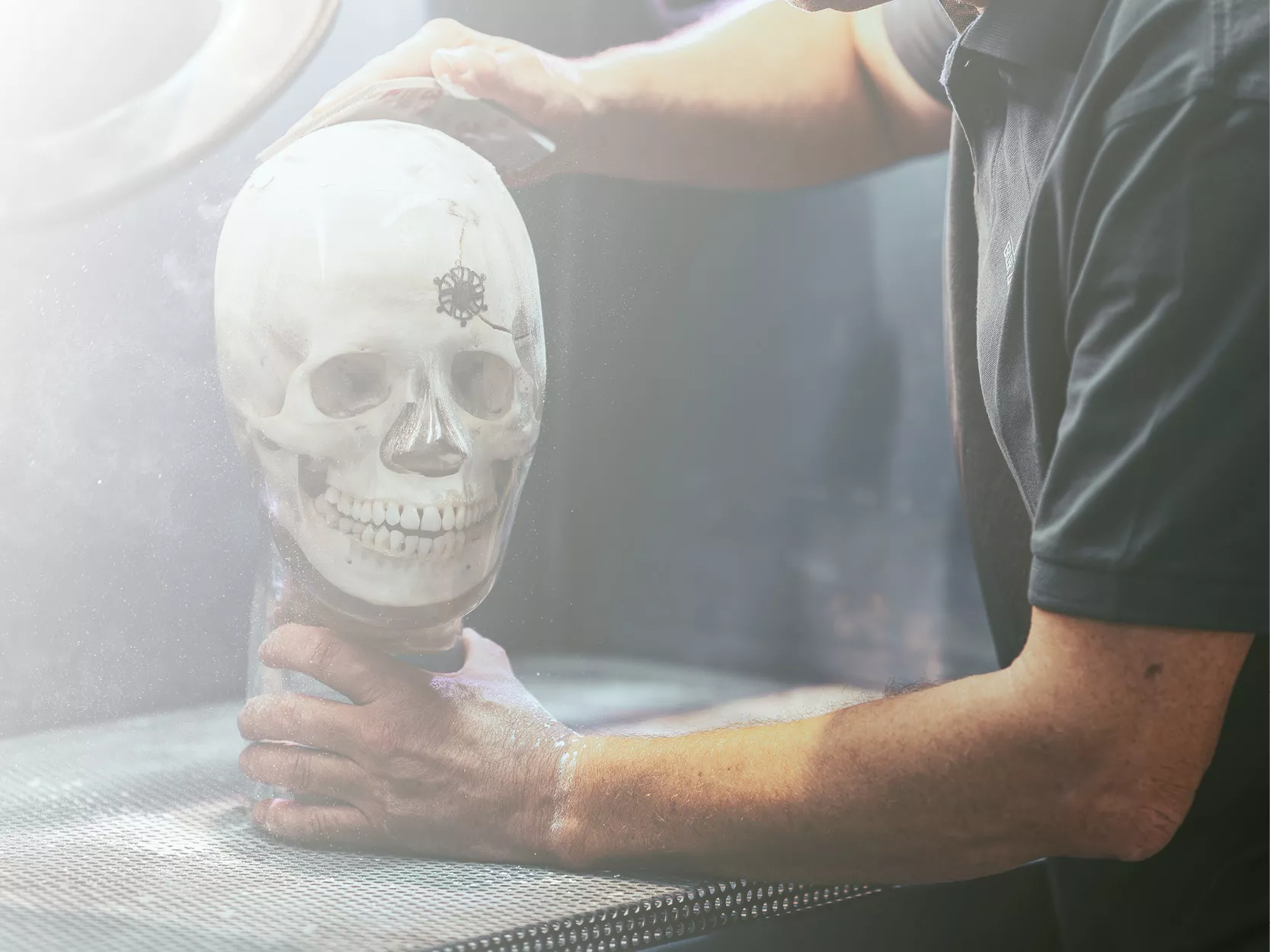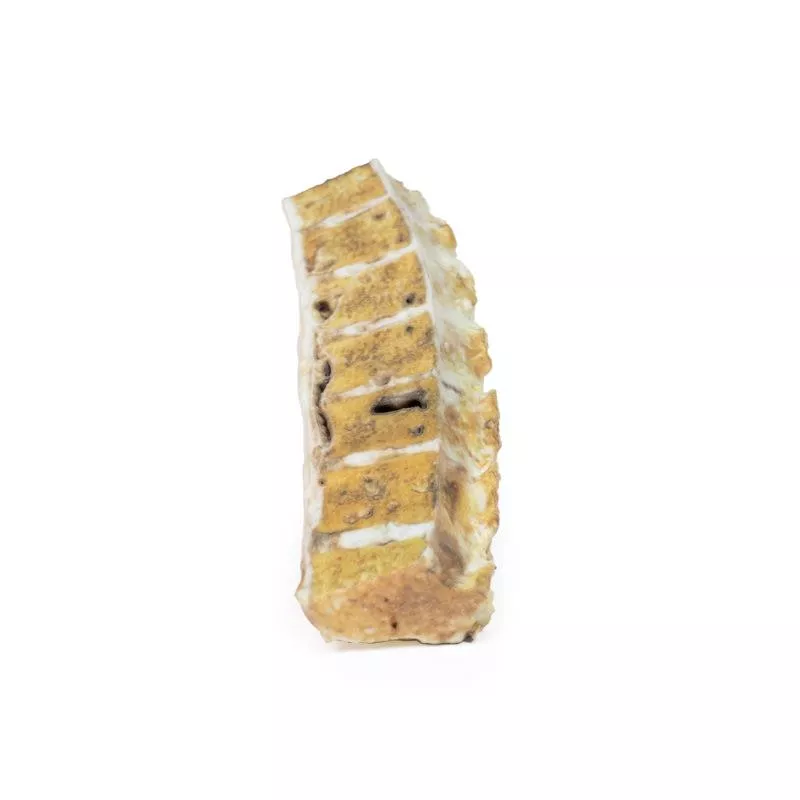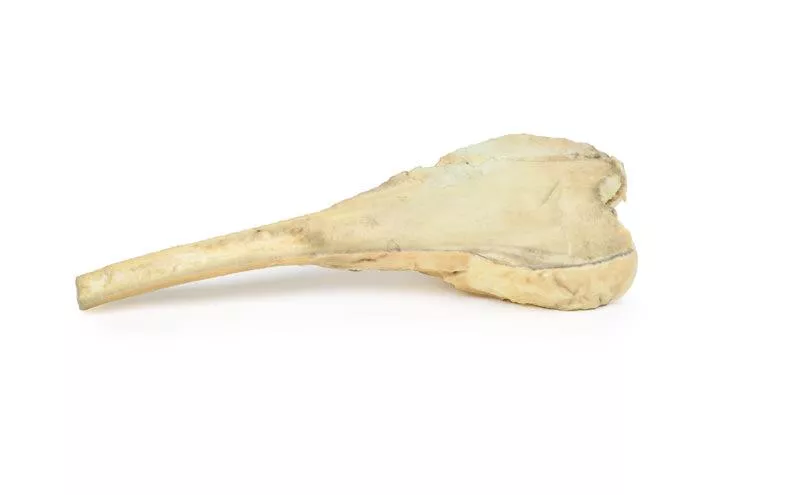Product information "Suppurative arthritis of the knee"
Clinical History
An 82-year-old man with a history of tuberculosis of the left knee in childhood presented with a painful and swollen knee that developed ten days before hospital admission. Examination revealed an inflamed and painful joint that slightly improved with antibiotics and rest. X-ray showed a severely disorganized knee joint, leading to a mid-thigh amputation three days after admission. Post-operative recovery was uneventful.
Pathology
The specimen includes the femur and tibia with exposed joint surfaces. These are severely eroded, brown, and irregular, with shaggy adhesions and yellow necrotic plaques. No normal articular cartilage remains. Bony projections up to 1?cm are present on the femoral condyles. Staphylococcus aureus was cultured from the joint. This represents a case of suppurative arthritis in a knee previously affected by tuberculosis.
Further Information
Suppurative (septic) arthritis is a bacterial joint infection, diagnosed through synovial fluid analysis, microscopy, and culture. Staphylococcus aureus is a frequent cause. In patients with monoarthritis and a history of TB, tuberculous arthritis should be considered, especially if chest radiographs or eosinophil counts are abnormal.
Musculoskeletal TB occurs in up to 19% of TB cases, more commonly in children due to higher bone marrow content. In adults, TB most often affects the spine (40%), followed by the hip (25%) and the knee (8%). While extrapulmonary TB accounts for 15–20% of cases in immunocompetent individuals, initial presentation as a joint infection is rare.
An 82-year-old man with a history of tuberculosis of the left knee in childhood presented with a painful and swollen knee that developed ten days before hospital admission. Examination revealed an inflamed and painful joint that slightly improved with antibiotics and rest. X-ray showed a severely disorganized knee joint, leading to a mid-thigh amputation three days after admission. Post-operative recovery was uneventful.
Pathology
The specimen includes the femur and tibia with exposed joint surfaces. These are severely eroded, brown, and irregular, with shaggy adhesions and yellow necrotic plaques. No normal articular cartilage remains. Bony projections up to 1?cm are present on the femoral condyles. Staphylococcus aureus was cultured from the joint. This represents a case of suppurative arthritis in a knee previously affected by tuberculosis.
Further Information
Suppurative (septic) arthritis is a bacterial joint infection, diagnosed through synovial fluid analysis, microscopy, and culture. Staphylococcus aureus is a frequent cause. In patients with monoarthritis and a history of TB, tuberculous arthritis should be considered, especially if chest radiographs or eosinophil counts are abnormal.
Musculoskeletal TB occurs in up to 19% of TB cases, more commonly in children due to higher bone marrow content. In adults, TB most often affects the spine (40%), followed by the hip (25%) and the knee (8%). While extrapulmonary TB accounts for 15–20% of cases in immunocompetent individuals, initial presentation as a joint infection is rare.
Erler-Zimmer
Erler-Zimmer GmbH & Co.KG
Hauptstrasse 27
77886 Lauf
Germany
info@erler-zimmer.de
Achtung! Medizinisches Ausbildungsmaterial, kein Spielzeug. Nicht geeignet für Personen unter 14 Jahren.
Attention! Medical training material, not a toy. Not suitable for persons under 14 years of age.







































